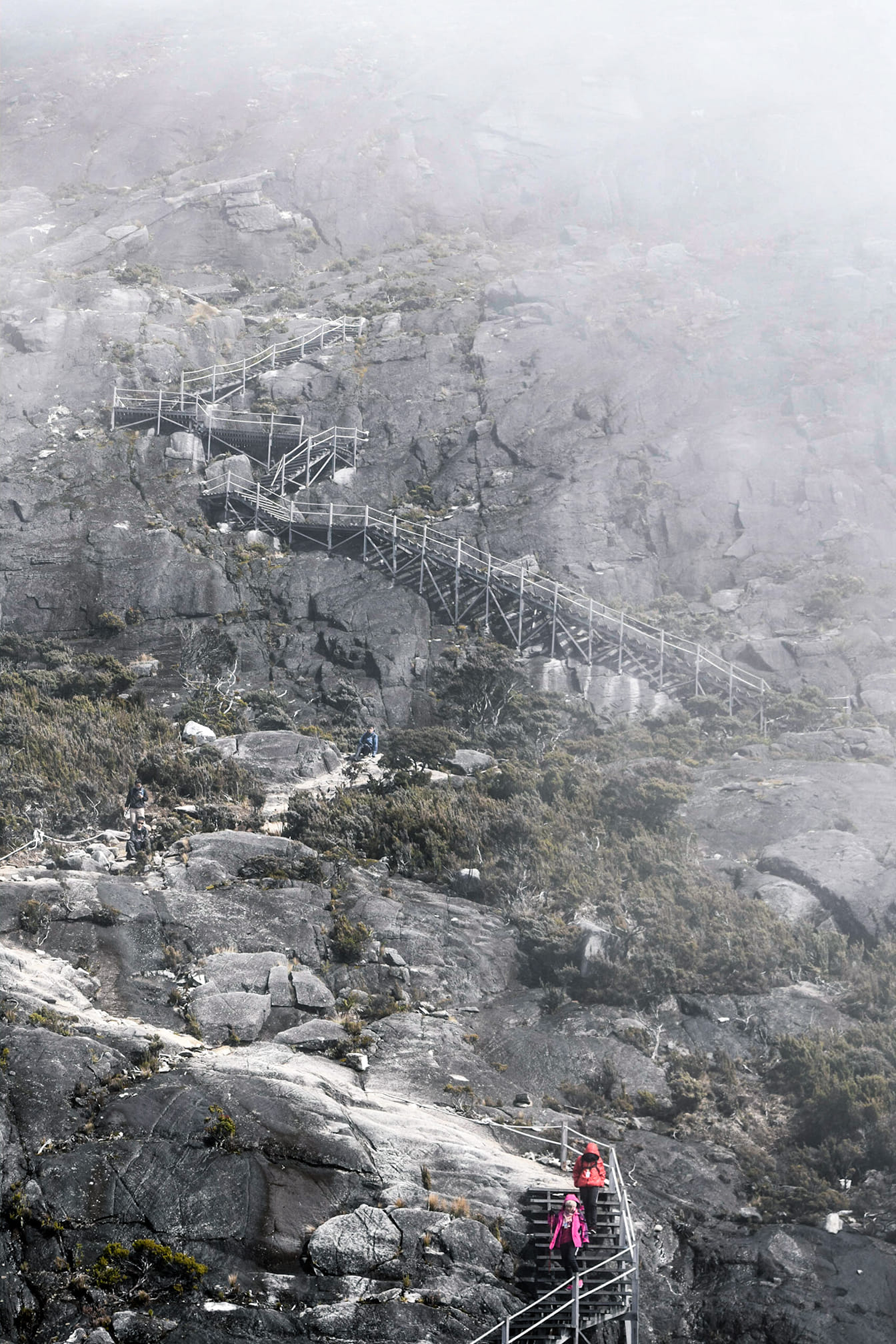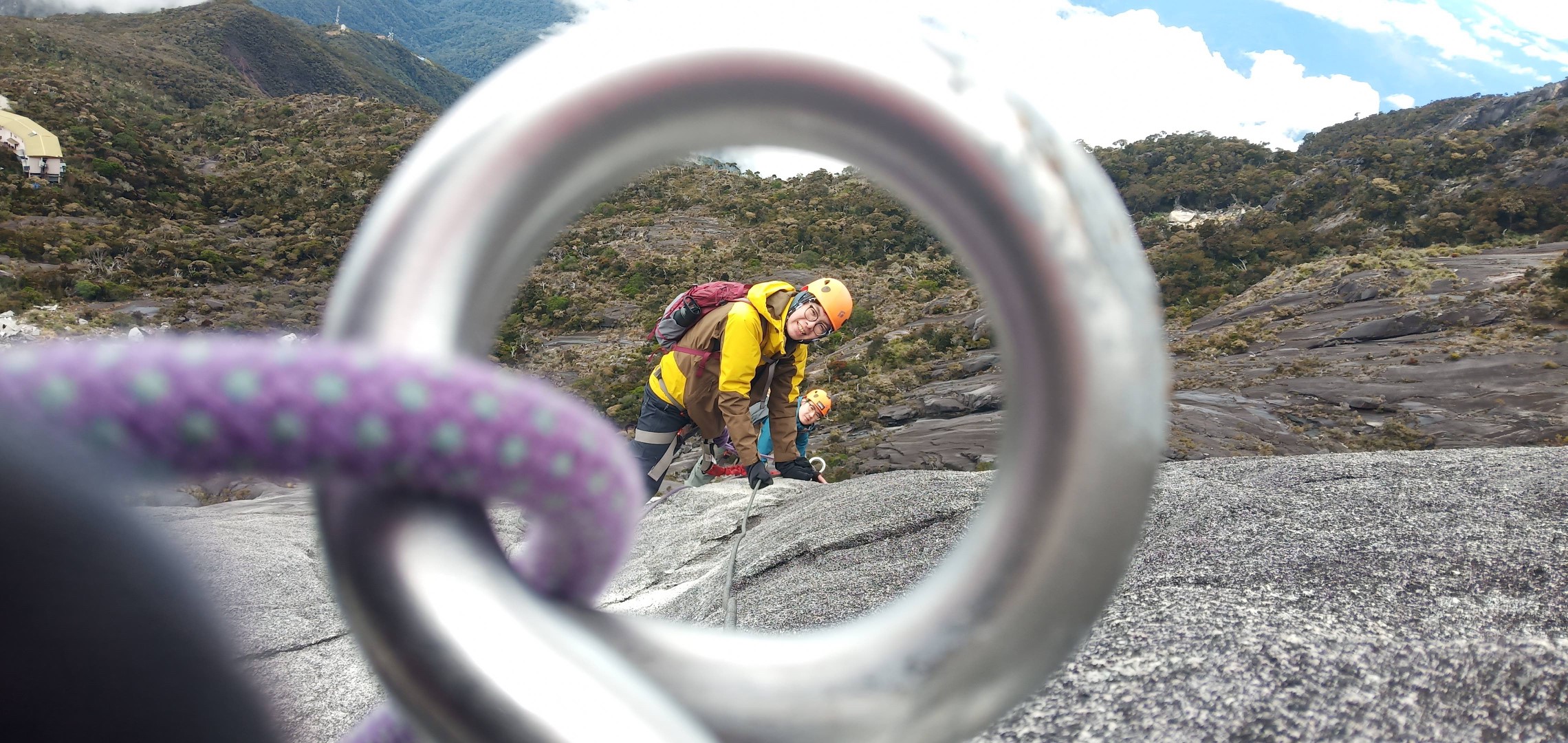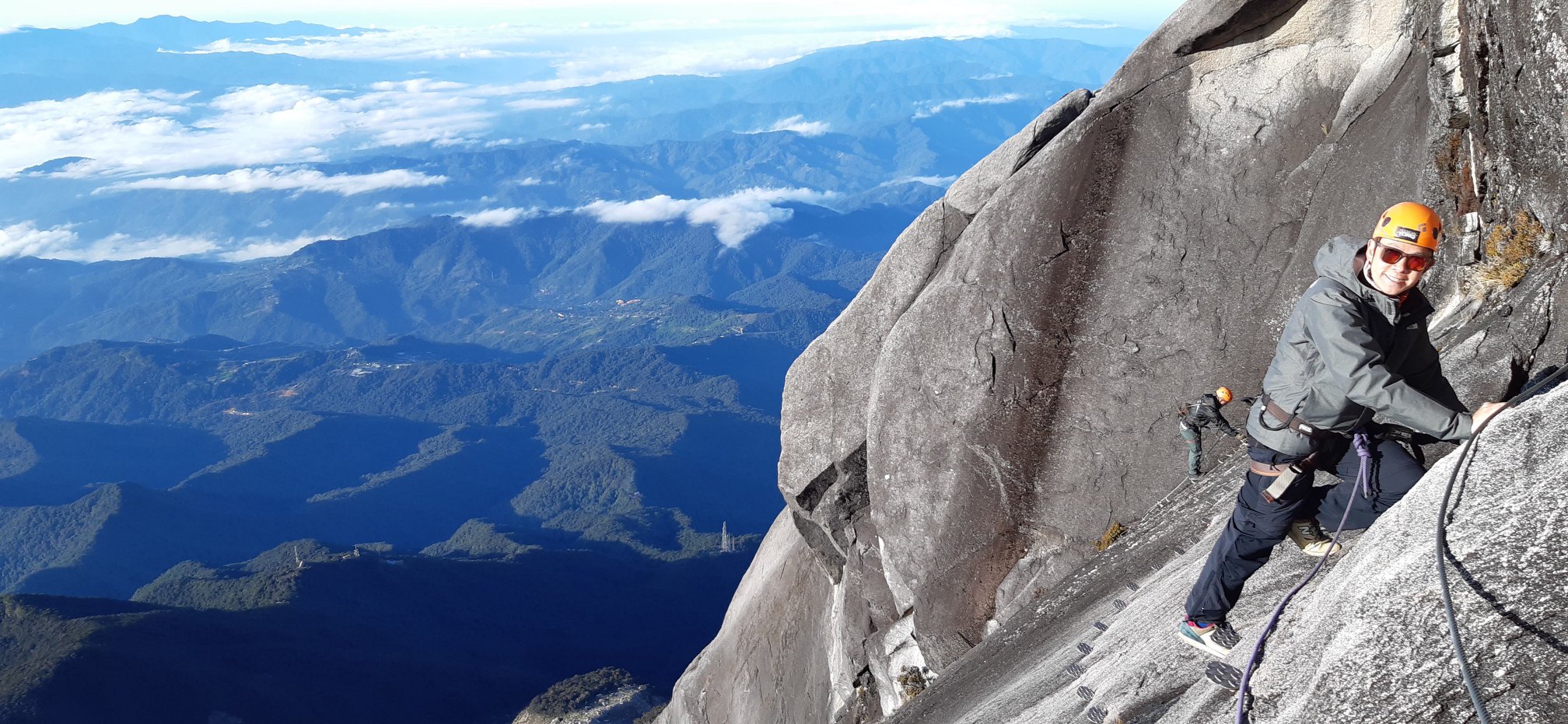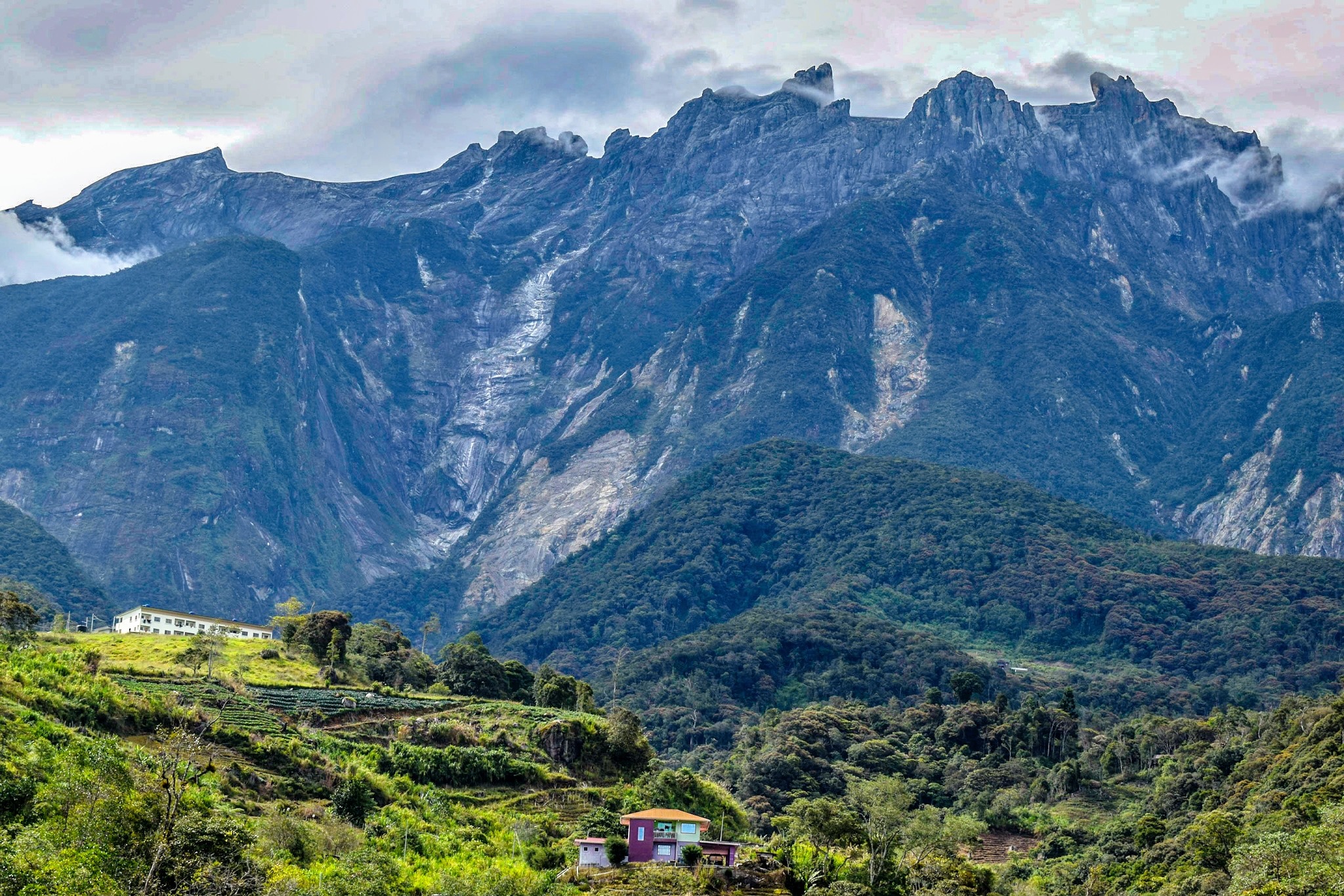Mount Kinabalu Climb Experience
Mount Kinabalu which is about 2 hours drive from the heart of Kota Kinabalu City is one of the travellers’ favourite destinations, and bookings would be made months in advance to secure the climbing permits as there are only about 150 climbers allowed in a day. Travellers flocked from every corner of the globe to climb the mountain, however the question to ask is the Mount Kinabalu Climb an ideal trip for you? How hard is it to climb Mount Kinabalu? What are the technical skills required and how well trained you need to be for the Mount Kinabalu Climb?
Climbers do not need special skills to climb Mount Kinabalu, as the first day of the hike is mostly man-made (huge) steps until you reach the accommodation huts at Panarlaban. First day of the hike is quite taxing, there are several shelters for climbers to rest along the 6km trail to the mountain huts, advice is to not rest too long as when your muscles relaxed and you need to start moving again that’s when you start to feel the muscle aches. On the second day of the climb there are several more steps (wooden) until you get to the Sayat-Sayat checkpoint, where the ranger will check on your climbing ID tag (the very reason you should have it with you throughout the 2 days climb) to allow you through to the summit plateau. Here on the hike is on the granite rock face, there along the path when necessary you may need to use a rope that is fixed to the rock to pull yourselves . Other than this, the rest is just hiking on the rock face plateau until you get to the Low’s Peak summit.
Having shared this, fitness level needs to be at least 7 out of 10 and to get to this fitness level, do stairs, running, hill walking or any type of cardio workout to boost your stamina at least 2 months before your climb, this is for those who are sedentary. After the climb do expect that your legs muscles will be aching, and any stairs up or down would be an agony to you for at least 2 to 3 days.

Mount Kinabalu Tour Packages
There are several packages put together for travelers to experience Mount Kinabalu, and whichever packages that you choose the objective still is to reach the summit (that is the highest peak on Mount Kinabalu). Most would do the climb in two days, which is the minimum to get to the peak, but why are there so many different packages? Here are some details to all the different packages and what does it comes with, for you to choose the right Mount Kinabalu Climb Tour Package.
The Differences between the 2 Days and 3 Days Mount Kinabalu Climb
Many travelers are wondering what are the differences between these two packages, and where would the stay be at. Mount Kinabalu stands at 4,095 meters above sea level, and it is the highest peak in Borneo and Malaysia. However, climbers would start their climb at an elevation of 1,500 meter (this is approximately) from Timpohon Gate to the Panarlaban (3,272 meter) where all the accommodations are at, and the total hike is about 6 km from the gate to the huts. This is the first day of the hike, that climbers would literally hike on man-made steps all the way to Panarlaban. Second day of the climb, which takes place very early at 1.30 am is to cover the remaining 2.8 km to the summit known as Low’s Peak, it is peculiar name for a highest peak to have indeed. Long-story-short, it is named after Sir Hugh Low, who was one of the British administrators to have successful climb Mount Kinabalu. That is the 2 days hike entails, now how does the 3 days climb works, you could opt to have your extra day at around the Kinabalu National Park area. The perk of doing this, is that you get to acclimatised before the climb. Acute Mountain Sickness (AMS) can happen to anyone of any fitness levels, an added advantage to stay one night at an elevation of 1,500 or so helps the body to acclimatised better. Alternatively, for a 3 days Mount Kinabalu climb you can also opt for having the extra day after descending from the mountain. This is ideally for someone who loves to enjoy the mountain air and view at length, or for those who would take it slow coming down from the mountain. Therefore there isn’t a rush to get back to the city, with tired legs and muscles it would just be nice to relax in the lodge.
Itinerary for 2 Days Mount Kinabalu Climb
Itinerary for 3 Days Mount Kinabalu Climb
To Via Ferrata or Not to Via Ferrata
What is Via Ferrata? It is an Italian term meaning ‘Iron Path’, which is a protected series of climbing route, built with a steel cable rails that are fixed to the rock face, with some elements of metal steps, ladders, suspension bridges and cable bridges. Climbers participating in the Via Ferrata activities would go through the series of the elements by using a safety harness clipped onto the wire. At Mount Kinabalu there are 2 level grades for climbers to choose and do the activity (these grades are according to the French grading), one is the ‘Walk the Torq’ referred as WTT and the second is the ‘Low’s Peak Circuit’ in short LPC. The differences between these two are as follows;
Walk the torq – WTT
Length of route 380 m
2 hours to complete
French grade PD
Highest point 3,520 m above sea level

Low’s Peak Circuit – LPC
Length of route 1.1 km
4 hours duration
French grade AD
Highest point 3,776 m above sea level

Those who would want to do the Via Ferrata, the accommodation stay is at Pendant Hut. On the first day of the hike climbers need to get to the hut by 3 pm to attend the safety Via Ferrata briefing, missing this first briefing may cancel your opportunity to do the Via Ferrata activity. Why this is so? Well, the trainers use this as a measurement for a climber’s fitness level, which is logic. As in if in 6 km hike a climber could not make it in 6 hours (one hour per/km) it would be difficult for the climber to complete the second day hike from the summit plus the Via Ferrata back to the Pendant Hut in time. You can also get booted-out to participate the Via Ferrata activity, should the second day of the hike coming down from the summit to the checkpoint of the Via Ferrata activities, you missed the cut-off time. At what level of fitness a climber should be at to join the Via Ferrata? Good STAMINA is the answer. Check out the Via Ferrata Route Here
There you go, these are the basic packages offered by tour operators for climbing Mount Kinabalu. There are of course other tailor-made trips, that you can add on to your Mount Kinabalu Climb. Such as an extension to visit Poring Hot Spring the day after the descend, staying an additional night at the mountain huts (Panarlaban) – doing this you get to have the choice to go to the summit TWICE! For those who really loves the mountain, and of course I would only recommend this for those physically fit with excellent stamina. For more Mount Kinabalu Climb Packages

